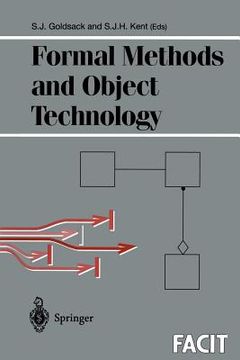Share
formal methods and object technology
Stephen J. Goldsack
(Illustrated by)
·
Stuart J. H. Kent
(Illustrated by)
·
Springer
· Paperback
formal methods and object technology - Goldsack, Stephen J. ; Kent, Stuart J. H.
Choose the list to add your product or create one New List
✓ Product added successfully to the Wishlist.
Go to My Wishlists
Origin: U.S.A.
(Import costs included in the price)
It will be shipped from our warehouse between
Monday, June 17 and
Wednesday, July 03.
You will receive it anywhere in United Kingdom between 1 and 3 business days after shipment.
Synopsis "formal methods and object technology"
Rationale Software engineering aims to develop software by using approaches which en- able large and complex program suites to be developed in a systematic way. However, it is well known that it is difficult to obtain the level of assurance of correctness required for safety critical software using old fashioned program- ming techniques. The level of safety required becomes particularly high in software which is to function without a break for long periods of time, since the software cannot be restarted and errors can accumulate. Consequently programming for mission critical systems, for example, needs to address the requirements of correctness with particular care. In the search for techniques for making software cheaper and more reliable, two important but largely independent influences have been visible in recent years. These are: - Object Technology - Formal Methods First, it has become evident that objects are, and will remain an important concept in software. Experimental languages of the 1970's introduced various concepts of package, cluster, module, etc. giving concrete expression to the importance of modularity and encapsulation, the construction of software com- ponents hiding their state representations and algorithmic mechanisms from users, exporting only those features (mainly the procedure calling mechanisms) which were needed in order to use the objects. This gives the software com- ponents a level of abstraction, separating the view of what a module does for the system from the details of how it does them.
- 0% (0)
- 0% (0)
- 0% (0)
- 0% (0)
- 0% (0)
All books in our catalog are Original.
The book is written in English.
The binding of this edition is Paperback.
✓ Producto agregado correctamente al carro, Ir a Pagar.

